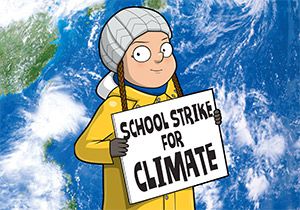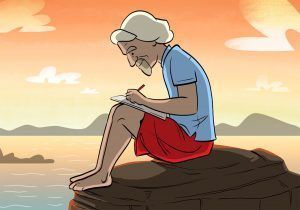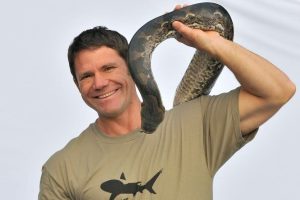
Cave creatures primary resource
Explore life in the Postojna Caves and what sustains it
This primary resource introduces children to an eyeless amphibian and the insects that keep it company in its cave environment. Discover the olm; a cave-dwelling salamander. How long can the olm live? Why is it known as the human fish? Why are its feet wonky?
Pupils will learn about different kinds of creatures that live in the caves and the conditions that they require of their habitat in our National Geographic Kids’ Science primary resource sheet.
The teaching resource can be used in study group tasks for discussion about how creatures adapt to live in different environments, such as caves. It could be used as a printed handout for each pupil to review and annotate, or for display on the interactive whiteboard, using the images included in the resource for class discussion.
Activity: Ask children to use the facts provided, and their own research, to find out more about the kinds of animals that live in the Postojna Caves. How do they think these creatures share this habitat? Who eats who? Pupils could write a report on why the olm and the different insects mentioned are so well adapted to their cave habitats. Could they survive in any other environments? Which ones? They could discuss, as a class, why this species of salamander has no eyes. What might life be like for the olm? Can they think of any other creatures that don’t have eyes, or that are blind?
N.B. The following information for mapping the resource documents to the school curriculum is specifically tailored to the English National Curriculum and Scottish Curriculum for Excellence. We are currently working to bring specifically tailored curriculum resource links for our other territories; including South Africa, Australia and New Zealand. If you have any queries about our upcoming curriculum resource links, please email: schools@ngkids.co.uk
This Animals primary resource assists with teaching the following Key Stage 1 Science (Year 1) objectives from the National Curriculum:
Pupils should be taught to:
- identify and name a variety of common animals including fish, amphibians, reptiles, birds and mammals
- identify and name a variety of common animals that are carnivores, herbivores and omnivores
- describe and compare the structure of a variety of common animals (fish, amphibians, reptiles, birds and mammals, including pets)
National Curriculum Key Stage 1 Science (Year 2) objective:
Pupils should be taught to:
- identify that most living things live in habitats to which they are suited and describe how different habitats provide for the basic needs of different kinds of animals and plants, and how they depend on each other
- identify and name a variety of plants and animals in their habitats, including micro- habitats
- find out about and describe the basic needs of animals, including humans, for survival (water, food and air)
National Curriculum Lower Key Stage 2 Science (Year 3) objective:
Pupils should be taught to:
- identify that animals, including humans, need the right types and amount of nutrition, and that they cannot make their own food; they get nutrition from what they eat
National Curriculum Lower Key Stage 2 Science (Year 4) objectives:
Pupils should be taught to:
- recognise that living things can be grouped in a variety of ways
- recognise that environments can change and that this can sometimes pose dangers to living things.
Pupils should use the local environment throughout the year to raise and answer questions that help them to identify and study plants and animals in their habitat. They should identify how the habitat changes throughout the year.
National Curriculum Upper Key Stage 2 Science (Year 5) objective:
Pupils should be taught to:
- describe the differences in the life cycles of a mammal, an amphibian, an insect and a bird
This Science primary resource assists with teaching the following Sciences Early level objectives from the Scottish Curriculum for Excellence:
- I have observed living things in the environment over time and am becoming aware of how they depend on each other
Scottish Curriculum for Excellence Second level Sciences objectives:
- I can identify and classify examples of living things, past and present, to help me appreciate their diversity. I can relate physical and behavioural characteristics to their survival or extinction.
- I can use my knowledge of the interactions and energy flow between plants and animals in ecosystems, food chains and webs. I have contributed to the design or conservation of a wildlife area.
Scottish Curriculum for Excellence Sciences Third level objectives:
- I can sample and identify living things from different habitats to compare their biodiversity and can suggest reasons for their distribution
Scottish Curriculum for Excellence Sciences Fourth level objectives:
- I understand how animal and plant species depend on each other and how living things are adapted for survival. I can predict the impact of population growth and natural hazards on biodiversity
Download primary resource
More Like

Greta Thunberg facts!

India facts: discover this incredible country

Adventure with Richard Branson









LEAVE A COMMENT
THANK YOU
Your comment will be checked and approved shortly.
WELL DONE,
YOUR COMMENT
HAS BEEN ADDED!
COMMENTS
CUSTOMIZE YOUR AVATAR